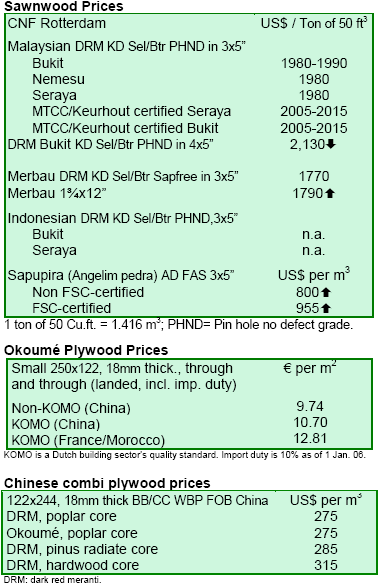|
Report
from the UK
Indicators point to a robust economy
The Centre for Economic and Business Research (CEBR) has raised its economic growth rate forecast for the UK to
2.8%, comfortably above the Chancellor of the Exchequer¡¯s expectations. The reason given is that migrant numbers from EU accession states beat CEBR
forecast by three times. Ernest and Young Item Club concurred with this finding.
The Chartered Institute of Purchasing (CIPS) Manufacturing Index for September rose higher than
expected to 54.4 from 53 a month earlier. CIPS said factory output has seen its fastest growth in more than two
years and rising export orders. Consumer confidence improved in September but has remained below its two
year average according to the Nationwide Consumer Confidence Index. The figures
revealed a recovery in spending after the dramatic fall during August following
an interest rate increase. Factory gate prices in the UK fell for the first time in 9 months after the cost of oil declined,
a sign that inflation pressures might be easing.
Housing activity reaching a plateau ¡ or not just yet?
House prices rose a further 1% in September according to the Halifax home prices index, but the annual rate dropped
to 8% from 8.2% a month earlier. Halifax said there were signs that housing activity had reached a plateau with
higher mortgage rates curbing demand. Wimpey, a leading house builder, reported that although the market was
sensitive, it expected to sell more houses in 2006 than last
year at slightly enhanced prices. Wolseley, the plumbing and builders group, had announced four further
acquisitions which were expected to add £148 million in additional revenue.

Report
from Netherlands
Well stocked Dutch market faces slow sales
The Dutch market situation for tropical hardwoods remained quiet in the first half of October as timber sales
were slow. With modest timber turnover and shipments forthcoming from positions taken earlier in the year, there
was not much eagerness by importers to purchase new parcels. There appeared to be adequate stocks, except
Brazilian sapupira sawnwood. Warehouses and receiving companies in Rotterdam/Spijkenisse and Moerdijk were
full of landed stocks of dark red meranti (drm) and sapele
with small spare capacity.
Traders were also somewhat hesitant to place additional orders of AD sapele as there were some volumes in
contract position yet to be produced or being shipped, which would require 3-5 more months for kiln drying
before they can be available for sale. Traders were not often certain of supplies from Africa as contracts might
not materialize. Therefore, with substantial forward positions of sapele outstanding, the Dutch market might
see some ¡°extra quantity¡± in case of non-delivery problems.
Sluggish demand offsets restricted supply
The fact that much timber was consigned to retailers and end users just before the summer holiday has exerted some
pressure on prices as sales slowed. However, the sluggish market was well balanced with the tight supply situation in
major tropical hardwood production regions. Delays in approval of forest management plans and paperwork
bottlenecks continued to complicate supply of FSC sapupira from Brazil. Yet, demand was strong and has led
the price of non-FSC sapupira to jump to $800 per m3 as
FSC material was even more difficult to obtain. Furthermore, mills able to supply were conditioning deals
to sale of mixed board sizes and not just the Dutch typical size (3x5¡±). However, the Dutch market was not in need of
sizes such as 7/4¡± or 2 1/2¡± thick. The supply situation was likely to be compounded by less favourable weather
conditions for timber production in Brazil towards the end
of the year.
Fresh offers only available from spring 2007 onwards
With meranti prices quietly stable at high levels, sapele lured business with comparatively lower prices. Given the
positive prospects of the Dutch joinery and building industry, importers increasingly bought sapele boards,
narrowing the price gap between with drm. The strong demand for sapele in the
Netherlands and Europe had meant that fresh AD sapele parcels would only be offered
for spring 2007, with fresh KD material available from summer onwards.
Malaysia¡¯s supply for the Dutch market remained restricted. There were only limited offers of popular sizes
such as 3x5¡± and 4x5¡± drm for not earlier than February-March loadings. Prompt offers of these popular
items were not available, a situation that was expected to be prolonged due to the Ramadan fasting period and as the
region slowly headed towards the rainy season.

|